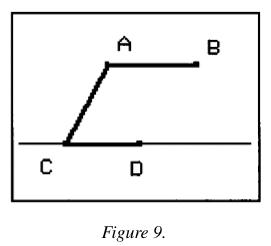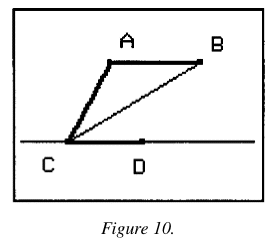Description:
Source(s):
Construct a shape (Figure 9) fitting the following conditions:
1. Segment AB is parallel to segment CD (i. e., AB // CD).
2. Segment AB has the same length as segment AC (i. e., AB = AC).

Construct segment CB (Figure 10).

Investigate: Is segment CB the angle bisector of angle ACD?
Justify your affirmative or negative answer to previous question. We assume that your conclusion is true, but why is it true? It is necessary to use geometric properties studied and accepted in the classroom.
